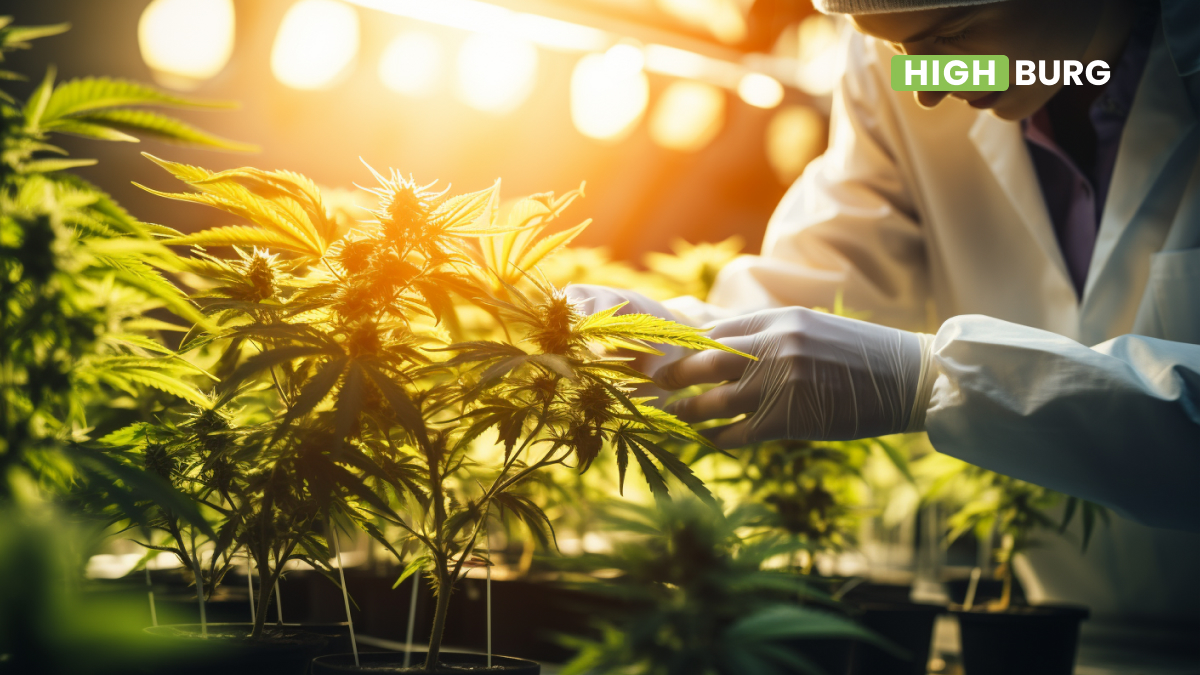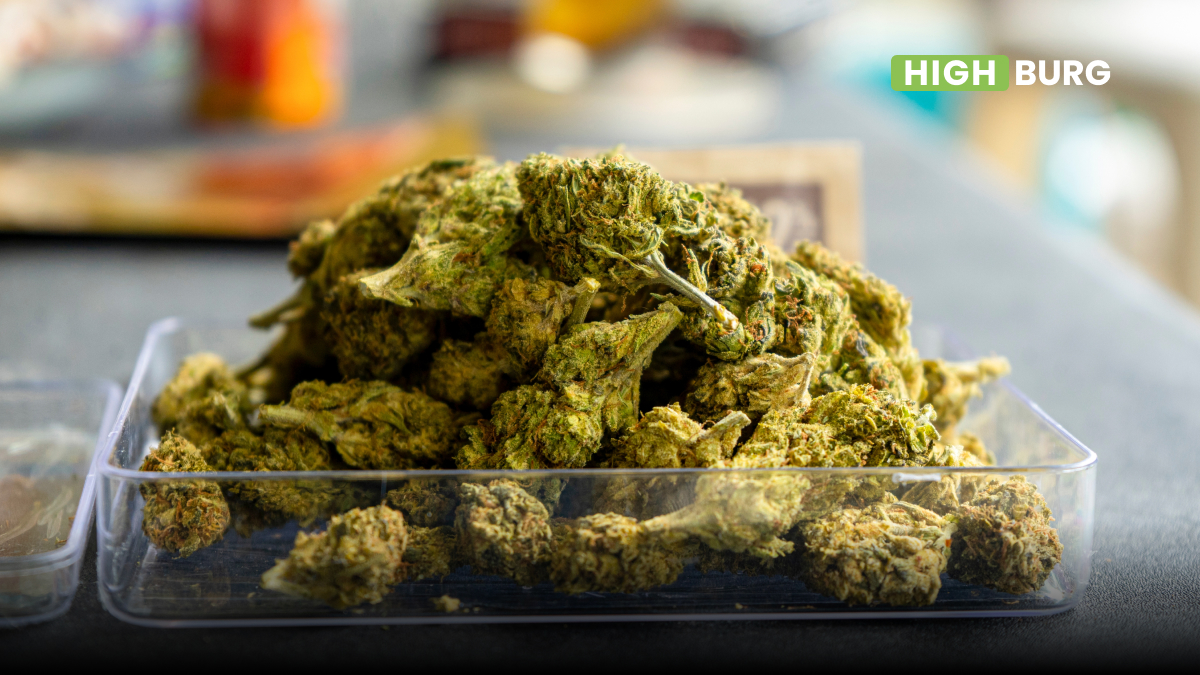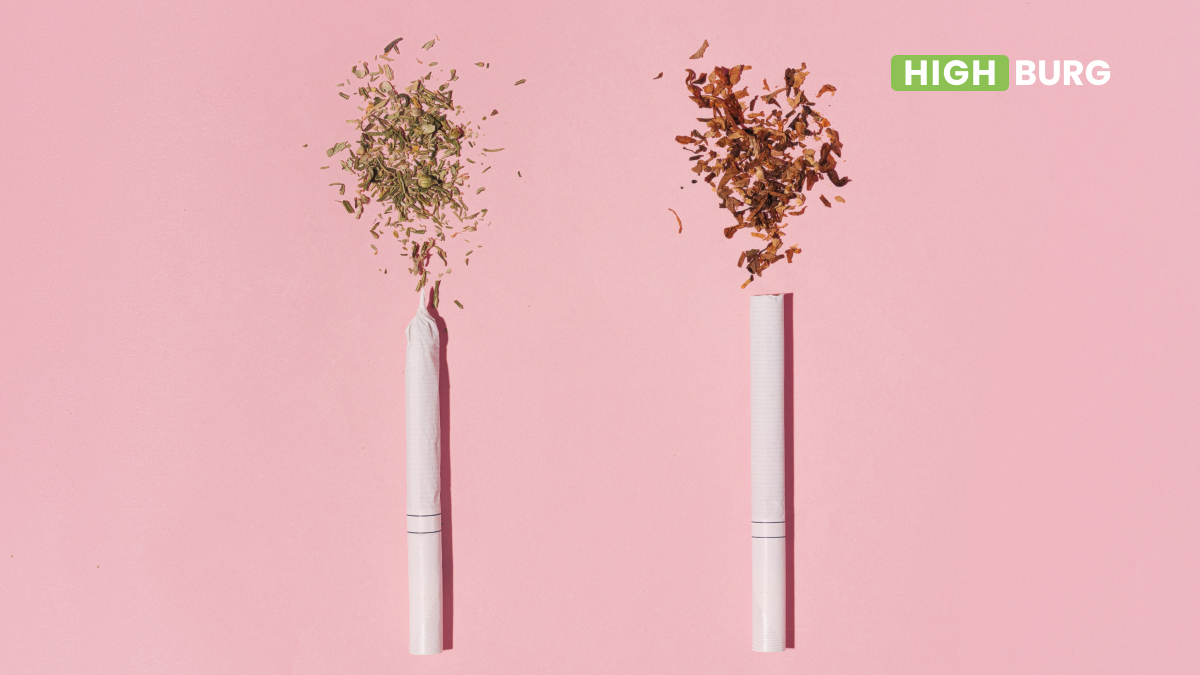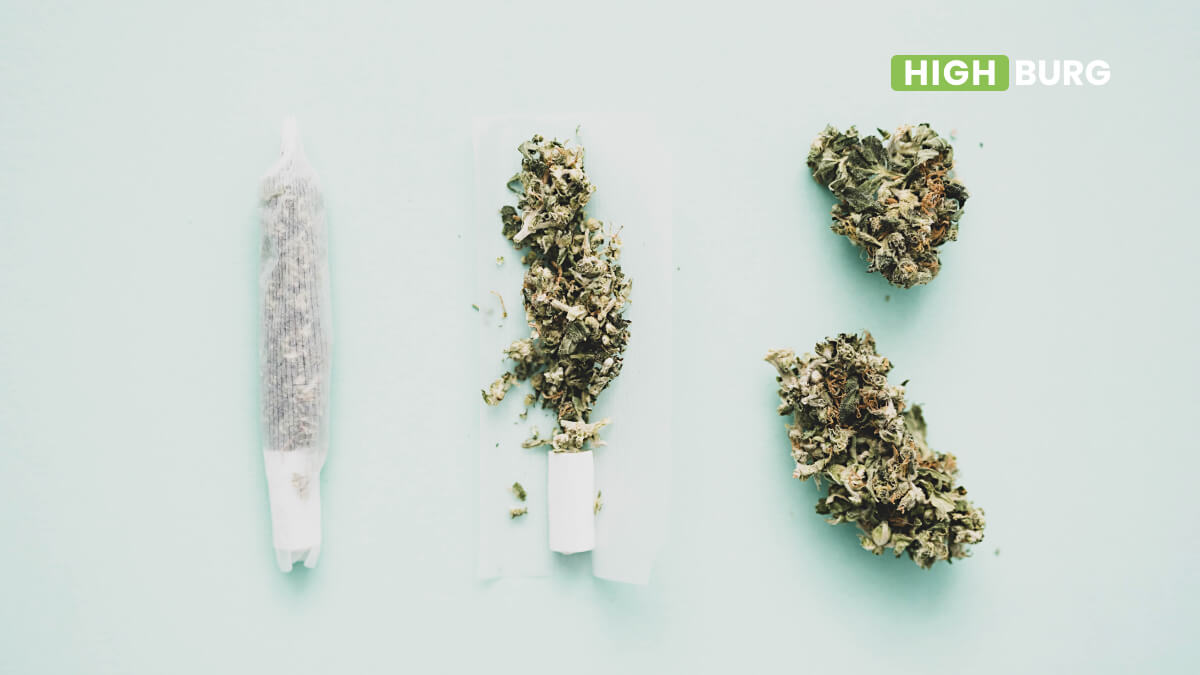How was THCP discovered? Is THCP more potent than THC? Does THCP cause side effects? Does THCP get you high? This article explores the research and development of this cannabinoid, including its discovery and how it compares to THC in terms of potency and effects.
History
THCP was first discovered in 2019 by a team of Italian researchers. The acronym stands for tetrahydrocannabiphorol, and it is a cannabinoid that is similar to THC in structure. However, THCP is much more potent than THC, with an affinity for the CB1 receptor that is 30 times higher.
This makes it one of the most potent cannabinoids ever discovered. In fact, THCP has been shown to be active at low concentrations. And even though there have not been any studies on humans yet, animal tests suggest that it can be used as an anti-inflammatory drug. If you are looking for another cannabis product with potent effects, you might want to give this cannabinoid a try!
It’s important to look into how scientists discover new cannabinoids to get a better grasp on how they derived THCP. Let’s look at THCA, for example. After isolating THC from cannabis and identifying its chemical structure, other scientists decided to synthesize pure forms of other known compounds present in marijuana.
For example, they created synthetic delta9-tetrahydrocannabinol acid (THCA), which didn’t possess psychoactive properties when smoked. It wasn’t until many years later that these chemists realized their creation had additional medical potential because it would convert into delta9-THC when heated or burned.
Eventually, someone figured out how to extract THCA from marijuana using high pressure liquid chromatography and named it TetraHydroCannabinolic Acid. Over time, the compound got shortened to just THCA. Once these scientists had isolated THCA, they attempted to create synthetically made versions of all other common marijuana chemicals.
They soon found that THCV converts into THCV once exposed to heat or air and recognized it as being medicinally valuable too.
Now, scientists continue to discover new cannabis compounds, such as THCP. In addition to discovering new cannabinoids, some researchers are also examining how to use old ones in different ways.
For instance, a French research group recently published results about their study involving mice that were administered THC orally versus those injected with the same dose of THC but suspended in PEG 400.
Surprisingly, those who received oral doses showed signs of greater tolerance after two weeks than those injected via injection. What does this mean? Future research will explore if these findings hold true for humans and what long term implications oral administration may have on your health.
So, the next time your friend offers you a marijuana brownie, think twice before accepting it. There is always the possibility that it contains THCA or THCP. Either way, enjoy responsibly!
The discovery of THCA led scientists to believe there might be another type of non-psychoactive cannabinoid. Of course, THCB was discovered shortly afterwards. Another team of Italian researchers discovered and named that one Tetrahydrocannabivarinic Acid (THCV).
Other research teams quickly followed suit and began finding more non-psychoactive cannabinoids such as Cannabigerolic Acid(CBGA) , Cannabichromene Hexyl Ether(CBCH) , Cannabinoline(CBN) , Cannabinoylindole(CBNL) , Cannabinolactone (CBL) , Linaloolalactone (LAL) etc.
Effects
There are a variety of effects that THCP can have on the body, but there has to be more research done on the cannabinoid without being 100% sure.
The Italian researchers that discovered THCP stated that there are some effects on the body:
Relief From Pain
Like some of the many other cannabinoids that are associated with providing pain relief to people, THCP can do the same thing. THCP has been shown to have more potency in comparison to other cannabinoids, and that can lead to the fact that it can also provide more pain relief in certain people.
Sedation
When THCP is combined with other cannabinoids, it is also known to be sedating. But it can also provide people with increased energy if it’s paired with certain cannabinoids.
Have I Been Consuming THCP All Along?
There is a good chance that you’ve been consuming THCP as a by-product of other cannabis products the entire time. It’s been said that cannabinoids don’t all of a sudden show up the exact second that they are discovered by scientists.
This leads to the fact that THCP could have been at the backbone the entire time without people recognizing it.
Does THCP Have Side Effects?
THCP is fairly similar to THC, and for that reason, some of the side-effects are also the same in comparison to it.
Some of these side-effects are:
- Anxiousness
- Paranoia
- Self-consciousness
- Feeling more alert
- The mouth might be drier
- Fatigue
- Eyes can be red
- Nausea
- Vomiting
Other Lesser-Known Cannabinoids
The cannabis plant is a unique organism in that it produces more than 100 cannabinoids of varying potencies, each with distinct effects on the human body.
Many of these cannabinoids occur in trace quantities and are only found in specific varieties or strains of cannabis. The most popular cannabinoids are THC and CBD, but there are many others that have medical benefits to offer as well.
The following is a list of lesser-known cannabinoids that have significant medicinal value:
Cannabigerol (CBG)
CBG is one of the most abundant terpenes found in the cannabis plant, and it’s also thought to be one of the oldest cannabinoids to exist on Earth. CBG has been shown to be effective at treating cancer cell growth, inhibiting the growth of breast cancer cells and suppressing tumor growth.
CBG may also be able to treat other conditions like Alzheimer’s disease, epilepsy, arthritis and even diabetes. In addition to its medicinal properties, CBG also has mild psychoactive effects when consumed in high doses.
Tetrahydrocannabivarin (THCV)
THCV is a non-intoxicating cannabinoid found in cannabis that has been proven to work well in the treatment of obesity. THCV, or tetrahydrocannabivarin, is the second most prevalent cannabinoid after THC (tetrahydrocannabinol) in marijuana plants. It has been shown to have anti-obesity effects, which are similar to those of CBD (cannabidiol).
THCV has been found to stimulate energy expenditure and improve lipid metabolism, resulting in weight loss. It also helps reduce the amount of food consumed by humans who consume it regularly.
The efficacy of THCV as an anti-obese agent was demonstrated with laboratory rats and mice. The rodents were given a high-fat diet and then treated with THCV for 12 weeks. These animals showed lower body weights compared to those who did not receive the treatment.
The effect lasted beyond the duration of treatment itself, suggesting that continuous intake may be necessary for maintaining weight loss over time.
Cannabidiolic Acid (CBDA)
CBDA is a non-psychoactive cannabinoid, meaning it won’t get you high like THC. However, CBDA has shown to have numerous health benefits, including reducing inflammation and pain, improving mood, and even fighting cancer.
CBDA stands for cannabidiolic acid, which is a chemical compound that’s found in raw cannabis plants. It’s the precursor form of CBD (cannabidiol) that’s converted into CBD once it’s heated during decarboxylation or extracted during distillation processes.
The cannabinoid acid form of cannabidiol, CBDA, is a product of decarboxylation (heating) of cannabidiol. Since heating is required, CBDA cannot be found in raw cannabis plants but can be extracted from them by heating. The CBDA molecule has a molecular weight of over 400 daltons, making it too large to fit into cell membranes.
However, when CBDA enters the body as an endocannabinoid it is converted into CBD by enzymes in the liver and gut wall. This process is called decarboxylation or decarbing.
Cannabidivarin (CBDV)
CBDV is a cannabinoid that’s found in both sativa and indica strains of cannabis, but it’s not psychoactive. CBDV, like CBD, isn’t regulated by the government because it doesn’t get you high. But, as more research into CBDV emerges, we’re starting to see some promising results.
CBDV is short for cannabidivarin, which is a natural cannabinoid found in cannabis plants. It’s one of several cannabinoids that has been identified in marijuana — along with THC, CBN, and others — but unlike THC and CBN, CBDV isn’t psychoactive.
That means it doesn’t alter your mood or perception in any way (and it won’t make you feel “stoned”). However, studies suggest that this compound may have therapeutic benefits for treating conditions like epilepsy and anxiety without causing side effects or dependency.
CBD is known for its ability to interact with receptors in our body called CB1 receptors. These receptors are part of what’s called the endocannabinoid system (ECS), which helps us regulate things like mood and appetite (among other things). When CBD interacts with these receptors, it can help balance out our ECS.
Cannabichromene (CBC)
CBC cannabinoid is a non-psychoactive cannabinoid that can be derived from both marijuana and hemp. CBC has been shown to have anti-inflammatory and neuroprotective effects, making it an appealing option for those looking for therapeutic benefits without the high caused by THC.
CBC cannabinoid is found in high concentrations in Jamaican Lion’s Tail (Leonotis leonurus) and Amelanchier alnifolia (Juneberry or Serviceberry). It is also present in other plants like black tea, although in much lower amounts than THC or CBD.
Studies have shown that CBC has anti-inflammatory and neuroprotective properties which may help explain why it has been used as an herbal medicine for centuries. However, there are limited human studies available on this compound so we don’t know if these claims are true or not yet.
What About THCA?
THCA is a non-psychoactive cannabinoid found in raw cannabis, but this compound doesn’t have the same medicinal benefits as THC. Instead, it’s converted into THC through a process called decarboxylation, which occurs when cannabis is heated up.
Decarbing cannabis can be done on its own or by using a vaporizer to inhale the resulting vapors. When the herb is heated up, THCA converts into THC and releases its therapeutic properties.
THC is one of more than 100 cannabinoids that make up the marijuana plant. This chemical compound can interact with our endocannabinoid system (ECS), which regulates things like mood, appetite and sleep cycles. It may also help relieve pain, nausea and other symptoms related to certain conditions.
While there are no hard-and-fast rules about how much decarboxylated cannabis should be consumed, some experts recommend starting with small doses (1 milligram or less) and gradually increasing your intake over time until you reach the desired effects.
What About The Most Common Cannabinoids?
Cannabinoids are the active compounds found in cannabis. They’re what make you feel high, and they also have a variety of health benefits.
The most well-known cannabinoid is tetrahydrocannabinol (THC). THC is the chemical responsible for the “high” feeling that marijuana users experience. But there are other cannabinoids too. In fact, there are over 100 different cannabinoids in marijuana plants. Here are some of the most common ones:
- Tetrahydrocannabinol (THC) — This is the main psychoactive ingredient in marijuana. It gives you a euphoric feeling and can help relieve pain and nausea. THC is also effective at treating sleep disorders, anxiety, muscle spasms and other conditions.
- Cannabidiol (CBD) — CBD is one of over 100 active compounds found in cannabis plants, but it’s not psychoactive like THC so it doesn’t get you high. It does have many therapeutic benefits though and has been used to treat epilepsy and other seizure disorders as well as anxiety disorders, chronic pain, nausea from chemotherapy treatment and multiple sclerosis symptoms among others. Some studies even suggest that CBD may be useful for treating certain types of cancer.
Final Thoughts
While THCP might be a lesser-known cannabinoid, it’s one that isn’t going anywhere anytime in the near future. More research needs to be conducted on this cannabinoid in order to figure out more about it, and when more studies become available, more people will evidently begin to use it.



